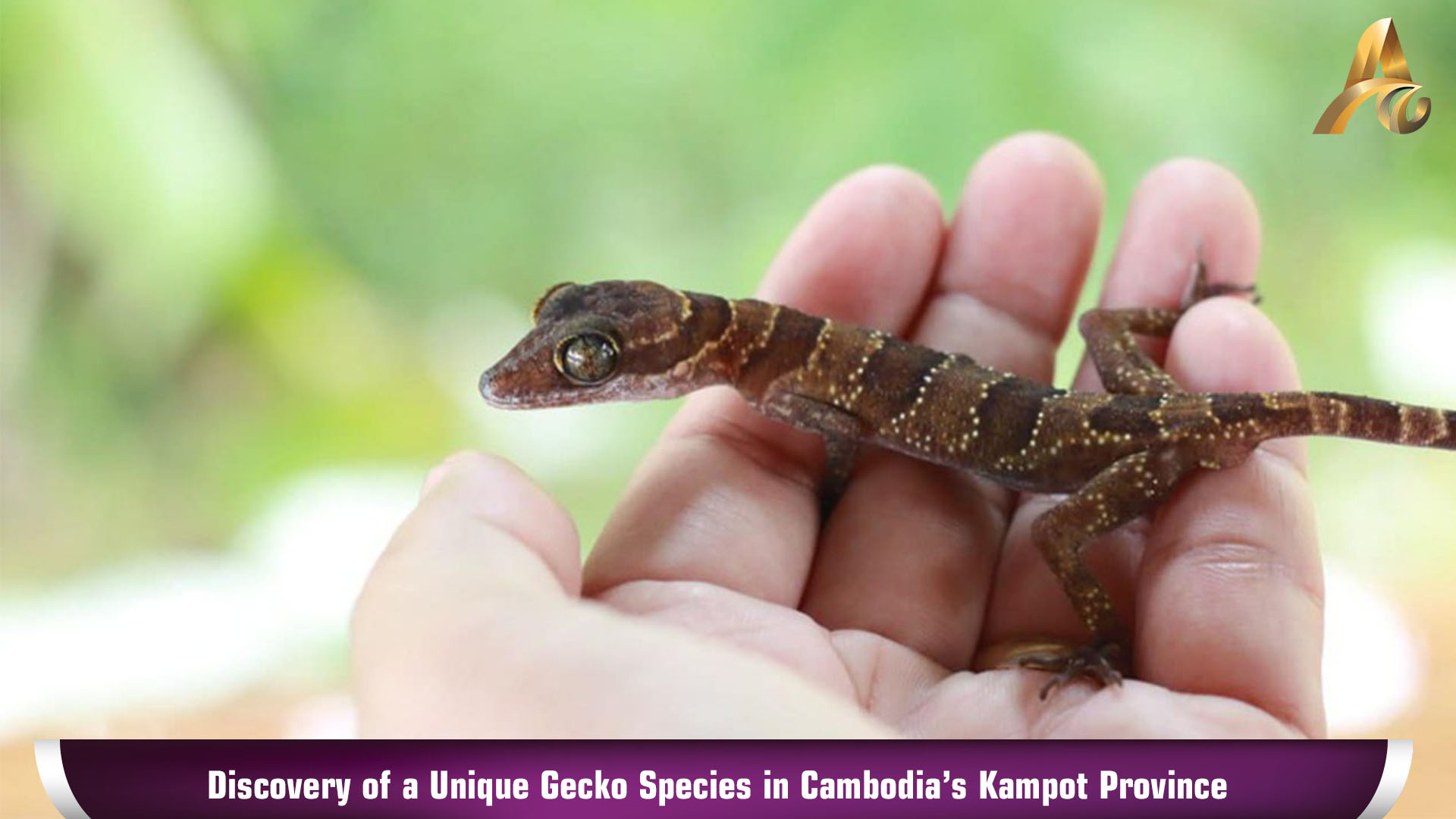Phnom Penh, June 25, 2024: A team comprising experts from Cambodia's Ministry of Environment, the Royal University of Phnom Penh, Wild Earth Allies, IUCN, and international experts from La Sierra University and the North Carolina Museum of Natural History have made a significant discovery—a new species of gecko, Cyrtodactylus regicavernicolus, also known as the Royal Cave Bent-toed Gecko. This discovery was made at the Phnom Preah Cave Royal Natural Heritage Site in Kampot Province.
Chhin Sophea, a biodiversity expert from the Ministry of Environment, explained that the nocturnal surveys conducted in 2021 and 2022 within the limestone caves of the Phnom Preah Cave Luang and the surrounding Phnom Totong-Phnom Touch natural heritage areas in Dang Tong and Banteay Meas districts led to this significant find. Detailed morphological, genetic, and statistical analyses confirmed this gecko as a new species, distinct from the 12 known varieties in Cambodia and neighboring regions.
The Royal Cave Bent-toed Gecko is characterized by its unique habitat in limestone caves, with adult males reaching up to 77.6 mm and females slightly larger at 80.7 mm. Notably, these geckos venture up to 20 meters deep into caves during the day and emerge near the entrances at night to feed.
This gecko is endemic to its limestone cave environment, making it the third species found exclusively in such settings, alongside C. laangensis from Phnom Laang in Cambodia and C. disjunctus in Thailand. This discovery brings the total number of bent-toed gecko species in Cambodia to ten and to 360 worldwide, highlighting Cambodia’s rich biodiversity and unique ecosystems.
Spokesperson for the Ministry of Environment, Khvay Atiya, emphasized that such discoveries underscore the importance of Cambodia’s protected areas and the government’s commitment to conserving its natural heritage. The recent establishment of the Phnom Preah Cave Royal Natural Heritage Area over 25 hectares aims to preserve the ecological roles, natural resources, and cultural significance of the region for current and future generations.
The Ministry of Environment, in coordination with other governmental bodies and the armed forces, is tasked with overseeing the management of this area to ensure the continued protection and sustainable use of its natural resources.























